How to Get Your Website to the Top of Google: Top 10 Proven Strategies

Securing a prominent position on Google's search results page is a goal for every website owner. It’s about more than just showing up; it’s about being found by the right people at the right time. Here are 10 proven strategies to help your website climb to the top.
How Google Ranks Pages:10 Proven Strategies You Need to Know
1. Master Keyword Research and Intent
At the core of any successful SEO strategy is understanding what your audience is searching for. This goes beyond simply identifying keywords; it’s about discerning user intent. Are they looking for information, a product to buy, a local service, or a specific website?
- Actionable Tip: Use tools like Google Keyword Planner, Ahrefs, or Semrush to uncover relevant primary and secondary keywords, including long-tail variations. Analyze the search results for your target keywords to understand the dominant user intent and tailor your content accordingly. For instance, if people are searching for "best running shoes," they're likely in buying mode, so your content should focus on product comparisons and reviews rather than just general information about running.
2. Optimize On-Page SEO Elements
Once you know your keywords and intent, strategically incorporate them into your on-page elements. This tells Google exactly what your page is about.
- Actionable Tip:
- Title Tags: Include your primary keyword near the beginning of your title tag. Keep it concise and compelling to encourage clicks.
- Meta Descriptions: Craft engaging meta descriptions (under 160 characters) that include relevant keywords and offer a clear call to action. While not a direct ranking factor, a good meta description significantly improves click-through rates.
- URLs: Create short, descriptive URLs that contain your primary keyword. Use hyphens to separate words.
- Headings (H1, H2, H3, etc.): Structure your content with clear, keyword-rich headings. Your H1 should reflect the page's main topic, and subsequent H2s and H3s can cover sub-topics.
- Content: Ensure your content is comprehensive, high-quality, and naturally incorporates your keywords and related LSI (Latent Semantic Indexing) keywords. Don't keyword stuff; focus on providing value.
3. Prioritize Technical SEO and Site Speed
Technical SEO forms the bedrock of a high-ranking website. Google explicitly states that site speed and mobile-friendliness are critical ranking factors. Especially for modern JavaScript-heavy websites, ensuring crawlers can fully render and index your content is paramount.
- Actionable Tip:
- Mobile-First Design: Ensure your website is responsive and provides an excellent experience on all devices. Google uses the mobile version of your site for indexing and ranking.
- Page Speed Optimization: Compress images, minify CSS and JavaScript files, leverage browser caching, and consider using a Content Delivery Network (CDN).
- Prerendering for JavaScript Websites: For sites built with frameworks like React, Angular, or Vue.js, client-side rendering can pose indexing challenges for search engine bots. Solutions like N7 SERA (Search Engine Rank Accelerator) can dynamically render your JavaScript pages into static HTML, making them fully crawlable and indexable by Googlebot and other crawlers. This significantly boosts page load speed for bots, improves crawl budget efficiency, and ensures all your content, including dynamic elements, is visible to search engines.
- XML Sitemaps: Submit an XML sitemap to Google Search Console to help crawlers discover all your important pages.
- Robots.txt: Use your robots.txt file to guide search engine bots, preventing them from crawling irrelevant sections of your site and conserving crawl budget.
- Schema Markup (Structured Data): Implement schema markup to provide search engines with a better understanding of your content, leading to richer snippets in search results (e.g., star ratings, product prices, event dates).
4. Create High-Quality, In-Depth Content
Content is king, but only if it's genuinely valuable, comprehensive, and unique. Google rewards content that thoroughly addresses a user's query and establishes your authority on a topic.
- Actionable Tip: Go beyond surface-level information. For each topic, aim to create the most comprehensive and authoritative resource available. Incorporate multimedia (images, videos, infographics), provide actionable advice, and cite credible sources. Consider creating "content hubs" or pillar pages that link to more detailed sub-topics, signaling topical authority to Google.
5. Build High-Quality Backlinks
Backlinks (links from other reputable websites to yours) are a significant ranking factor, acting as "votes of confidence" for your content.
- Actionable Tip: Focus on earning natural, high-quality backlinks from authoritative and relevant websites. Strategies include:
- Creating "Link Bait" Content: Develop engaging, shareable content (e.g., original research, in-depth guides, compelling infographics) that others naturally want to link to.
- Broken Link Building: Find broken links on other websites and suggest your relevant content as a replacement.
- Guest Blogging: Write for other authoritative blogs in your niche, including a link back to your site (ensure it's a natural fit).
- Resource Page Link Building: Identify resource pages in your industry and suggest your valuable content to be included.
6. Optimize for User Experience (UX) and Core Web Vitals
Google heavily emphasizes user experience. Metrics like bounce rate, time on page, and Core Web Vitals (Largest Contentful Paint, First Input Delay, Cumulative Layout Shift) directly influence your ranking.
- Actionable Tip:
- Intuitive Navigation: Make it easy for users to find what they're looking for with clear menus and internal linking.
- Readability: Use clear fonts, sufficient line spacing, and break up long paragraphs.
- Visual Appeal: Design an aesthetically pleasing website that is easy on the eyes.
- Fast Loading Times: As mentioned, optimize for speed, which is a core component of good UX. N7 SERA, for instance, significantly reduces load times for bots, which can also positively impact user experience metrics reported to Google.
- Minimize Pop-ups: Avoid intrusive pop-ups that hinder the user experience, especially on mobile.
7. Leverage Internal Linking
Internal links help Google understand the structure of your website and distribute "link equity" (ranking power) across your pages.
- Actionable Tip: Link relevant pages within your site using descriptive anchor text (the visible, clickable text of a hyperlink). This guides users and search engine crawlers through your content and helps establish topical authority for specific keywords.
8. Optimize for Local SEO (If Applicable)
For businesses with a physical location or those serving a specific geographic area, local SEO is crucial.
- Actionable Tip:
- Google Business Profile: Create and fully optimize your Google Business Profile (GMB) listing. Ensure your Name, Address, and Phone number (NAP) are consistent across all online directories.
- Local Citations: List your business on other reputable local directories like Yelp, Yellow Pages, etc.
- Customer Reviews: Encourage customers to leave positive reviews on your Google Business Profile and other platforms. Respond to all reviews, both positive and negative.
9. Monitor and Analyze Performance
SEO is an ongoing process. Regularly monitoring your website's performance is essential to identify what's working and what needs improvement.
- Actionable Tip:
- Google Analytics: Track website traffic, user behavior (bounce rate, time on page), and conversion rates.
- Google Search Console: Monitor your search performance (impressions, clicks, average position), identify crawl errors, review indexing status, and see which keywords you're ranking for.
- Keyword Rank Trackers: Use tools to monitor your keyword rankings over time and understand the impact of your SEO efforts.
10. Stay Updated with Google Algorithm Changes
Google constantly updates its ranking algorithms. What worked last year might not work today.
- Actionable Tip: Follow reputable SEO news sources, Google's official announcements, and industry thought leaders. Be prepared to adapt your strategies based on these changes to maintain and improve Google ranking. For instance, recent shifts towards AI-powered search (like Google's Search Generative Experience) emphasize the importance of comprehensive, entity-rich content and a strong internal linking structure.
Conclusion
Getting your website to the top of Google is a journey, not a destination. It demands a holistic approach that combines meticulous keyword research, technical excellence, compelling content creation, robust backlink strategies, and a strong focus on user experience. By consistently applying these ten proven strategies, you're not just aiming for higher rankings; you're building a healthier, more visible, and more authoritative online presence that truly resonates with both search engines and your target audience. Embrace the process, leverage the right tools, and watch your website climb to the forefront of Google's search results.
FAQs
Do backlinks help my website appear on Google?
Absolutely. Backlinks are critical for Google ranking. They act as "votes of confidence" from other reputable websites, signaling to Google that your content is valuable and authoritative. The more high-quality, relevant backlinks you earn, the better your chances of appearing prominently.
Is mobile optimization important for getting listed on Google?
Yes, it's non-negotiable. Google operates on a mobile-first indexing principle, meaning the mobile version of your site is the primary one used for ranking. A mobile-optimized, fast, and user-friendly experience is crucial for both visibility and user engagement.
What tools can I use to improve my website's visibility on Google?
Essential tools include Google Search Console (for performance monitoring and indexing), Google Analytics (for user behavior), Google Keyword Planner (for keyword research), and Google PageSpeed Insights (for speed optimization). For JavaScript-heavy sites, solutions like N7 SERA are vital to ensure full crawlability and indexing.
How long does it take for Google to index my website?
It varies. While Google can index a new website within a few days, it commonly takes 2-3 weeks for initial indexing. For all pages to be fully crawled and ranked, it can extend to a few months, depending on factors like site authority, content quality, and crawlability (which N7 SERA significantly enhances for modern web applications).

.png)
.png)

.png)